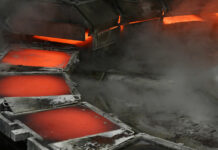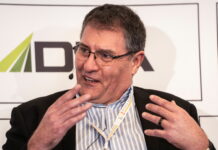
[miningmx.com] — IF there was one message that came through loud and clear at the Modern Energy Conference held recently in Denver it was this: the battery has beaten the fuel cell in the race to power electric vehicles.
What that means for the resources industry is increasing demand for vanadium, lithium and rare earth metals and a loss of potential demand for platinum, which is used in fuel cells, with the platinum industry touting that potential source of new demand since the mid-Eighties.
But the application of fuel cells in vehicles has simply not taken off – a fact acknowledged by Anglo Platinum CEO Neville Nicolau, who commented in July: “For the past 10 years nobody has really done anything about fuel cells.”
Assessment from various speakers at the Denver conference was that fuel cells are more expensive and less reliable than battery technology and inherently less efficient.
Instead, the current focus is on raising the capacity of batteries and speeding up the rate at which they can be recharged as well as reducing their weight.
The driving motivation behind the technology is to power the new generation of electric vehicles being developed, largely for the Asian market. Kerry Knoll, chairman of Canada Lithium, says many Asian consumers will be trading up from ownership of electric scooters to electricpowered cars. “They don’t have the issues about electric cars Western nations do.”
The key metal in these new generation batteries is lithium, which, according to the Electric Metals Green Book produced by Canadian investment firm Byron Capital Markets (Byron), “has arisen from nothing to represent the great hope for electrification of the light vehicle fleet. Lithium batteries were relatively unknown in the late Nineties but have become ubiquitous in portable electronics since.”
The reason is lithium can carry large amounts of power in a small, lightweight package.
Vanadium has traditionally been used as ferrovanadium alloy to increase the strength of various types of steel but hitech applications have now been developed in lithium batteries and rare earth magnets – both critical to the development of electric-powered vehicles.
Byron says vanadium “supercharges” lithium batteries and “is growing into one of the most important metals about which no one has ever heard”. Byron says rare earth magnets are orders of magnitude stronger than old-fashioned iron magnets and this new technology has enabled huge leaps in performance in computer hard drives, wind turbine generators and electric motors.
Some 97% of the world’s supply of rare earth elements comes from China and the recent uncertainty about whether China had stopped exporting rare earth to Japan has highlighted that strategic dependence.
British institution Fairfax says: “The United States is rushing to restart production of rare earths on back of growing concerns over Chinese dominance in the industry, which is vital to the technology and defence sector.” Byron executive Jon Hykawy told the conference:
“There’s a need for rare earth supply outside of China.”
The bad news for South African investors is that this country features only in the production of vanadium and, even there, entry points are limited. Around 50% of the world’s lithium is produced in Chile, which – with three other countries: Australia, China and Argentina – account for 80% of total supply.
SA produces around 40% of world vanadium supply but it’s tightly held.
London-listed Xstrata now wholly owns the Rhovan operation, while Vantech Vanadium is privately owned.
Anglo American’s former Highveld Steel and Vanadium near Witbank is still listed on the JSE but is now part of the Russian Evraz group and the stock is
extremely tightly held.
– Article originally published in Finweek










